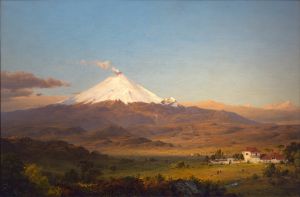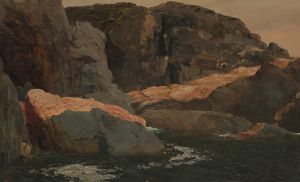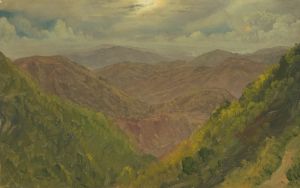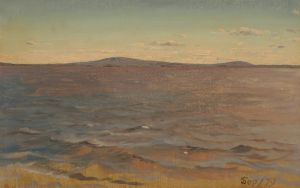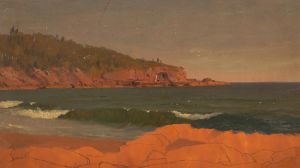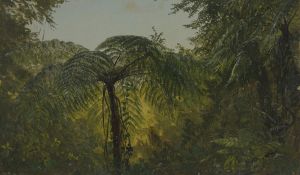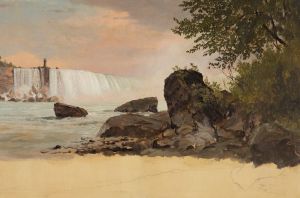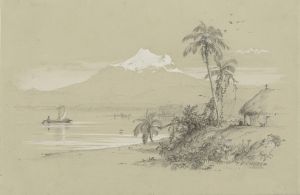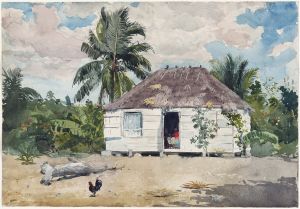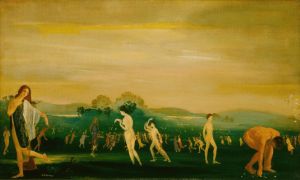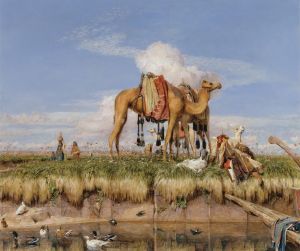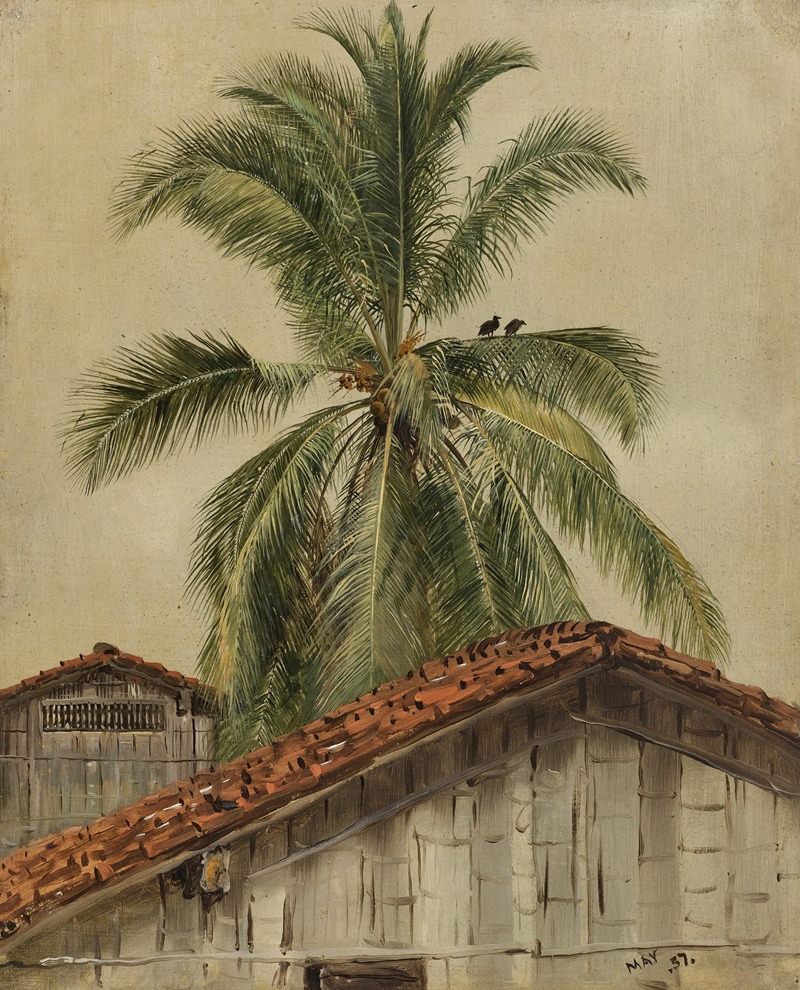
Palm Trees and Housetops, Ecuador
A hand-painted replica of Frederic Edwin Church’s masterpiece Palm Trees and Housetops, Ecuador, meticulously crafted by professional artists to capture the true essence of the original. Each piece is created with museum-quality canvas and rare mineral pigments, carefully painted by experienced artists with delicate brushstrokes and rich, layered colors to perfectly recreate the texture of the original artwork. Unlike machine-printed reproductions, this hand-painted version brings the painting to life, infused with the artist’s emotions and skill in every stroke. Whether for personal collection or home decoration, it instantly elevates the artistic atmosphere of any space.
Frederic Edwin Church, a prominent figure in the Hudson River School of American landscape painting, is renowned for his detailed and dramatic depictions of natural scenes. One of his works, "Palm Trees and Housetops, Ecuador," exemplifies his fascination with the exotic landscapes of South America, a region he explored during the mid-19th century.
Church was born in 1826 in Hartford, Connecticut, and studied under Thomas Cole, the founder of the Hudson River School. This movement was characterized by its realistic and intricate portrayals of American landscapes, often imbued with romanticism and a sense of the sublime. Church, however, expanded his scope beyond the American wilderness, venturing into South America, the Arctic, and the Middle East, among other regions.
In 1853 and 1857, Church traveled to South America, inspired by the writings of the German naturalist and explorer Alexander von Humboldt. Humboldt's works, particularly his explorations of the Andes and the Amazon, captivated Church and influenced his decision to explore these regions himself. During his travels, Church made numerous sketches and studies, which he later used as references for his larger studio paintings.
"Palm Trees and Housetops, Ecuador" is one of the works that emerged from Church's South American expeditions. Although specific details about the painting's creation and current whereabouts are scarce, it is known that Church's South American works often depicted the lush and diverse landscapes he encountered. These paintings typically feature dramatic contrasts between light and shadow, vibrant colors, and meticulous attention to detail, capturing the grandeur and diversity of the natural world.
Church's South American paintings, including "Palm Trees and Housetops, Ecuador," reflect his interest in the intersection of nature and civilization. By incorporating elements such as palm trees and architectural structures, Church highlighted the coexistence of human and natural environments. This theme is consistent with the broader Hudson River School ethos, which often emphasized the harmony between humanity and nature.
Throughout his career, Church's works were celebrated for their technical skill and emotional impact. His ability to convey the majesty of the natural world earned him significant acclaim, and his paintings were exhibited widely in the United States and abroad. Church's South American landscapes, in particular, contributed to his reputation as a leading landscape artist of his time.
In addition to his artistic achievements, Church was also involved in various cultural and philanthropic endeavors. He was a founding trustee of the Metropolitan Museum of Art in New York City and played a role in the development of Olana, his Persian-inspired home and studio in Hudson, New York. Today, Olana is a National Historic Landmark and serves as a museum dedicated to Church's life and work.
While "Palm Trees and Housetops, Ecuador" may not be as widely recognized as some of Church's other masterpieces, such as "The Heart of the Andes" or "Niagara," it remains an important part of his oeuvre. The painting exemplifies Church's dedication to capturing the beauty and complexity of the natural world, as well as his enduring legacy as one of America's foremost landscape painters.





